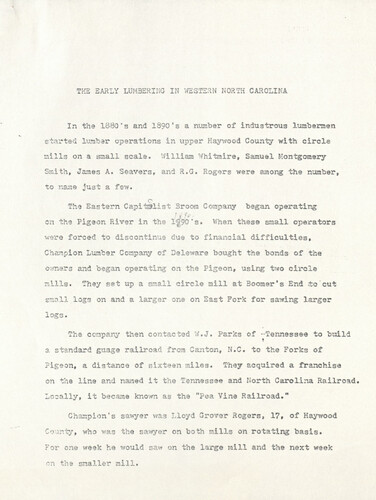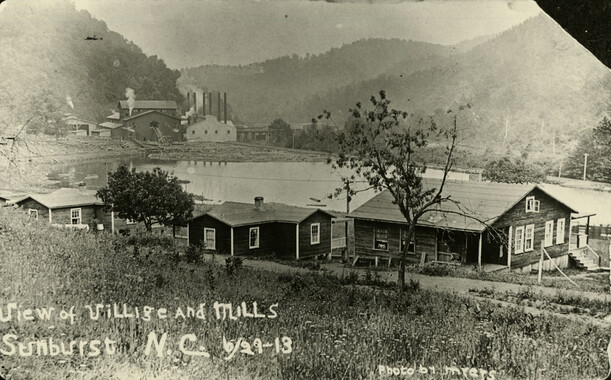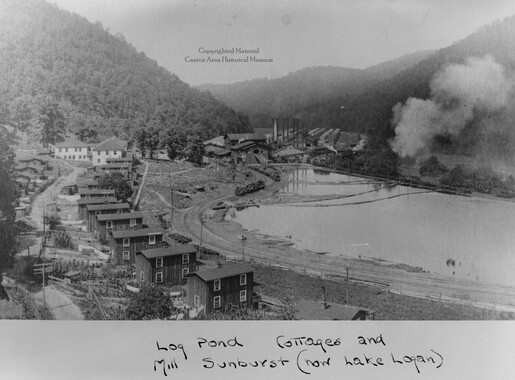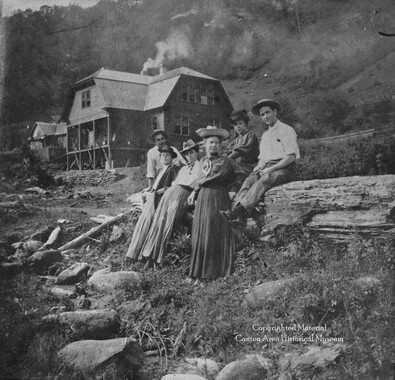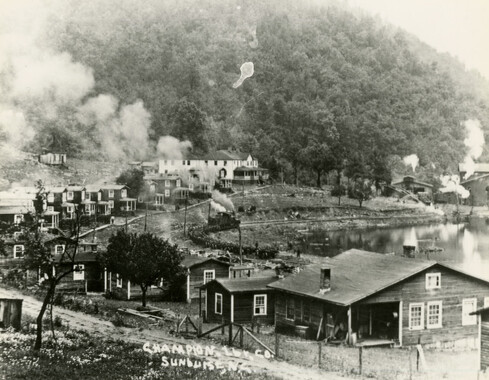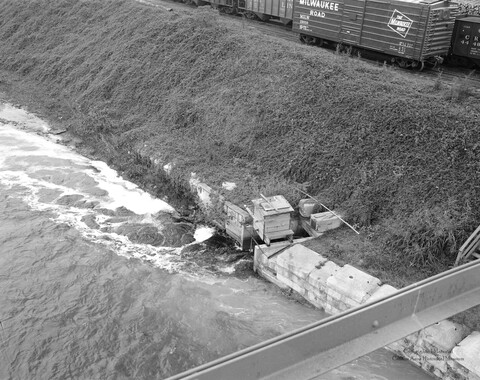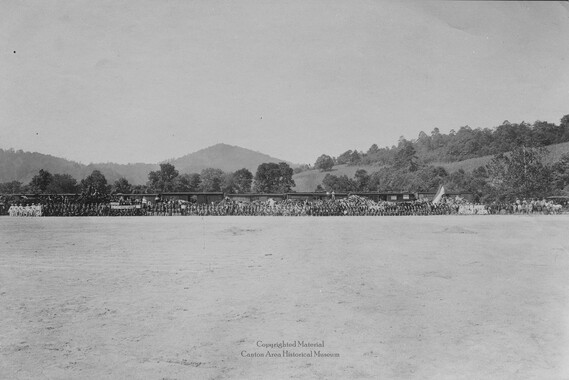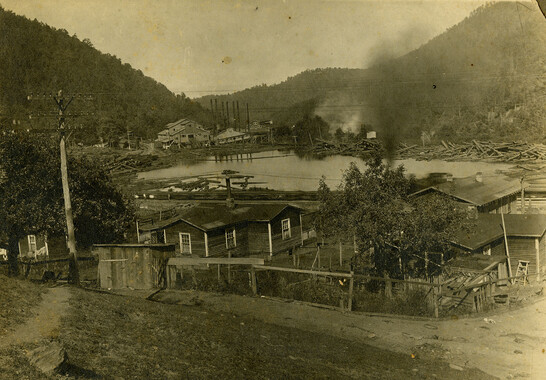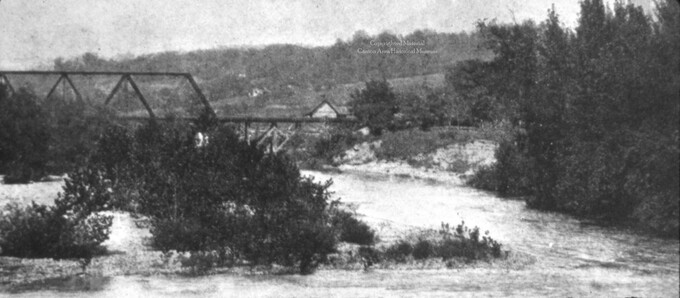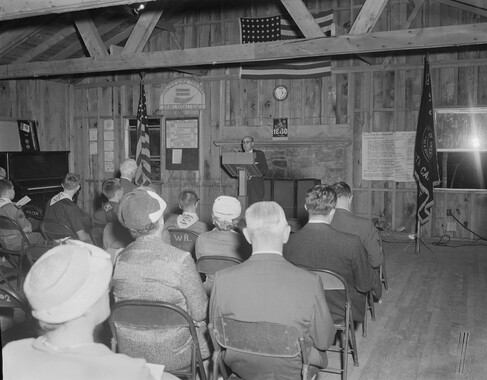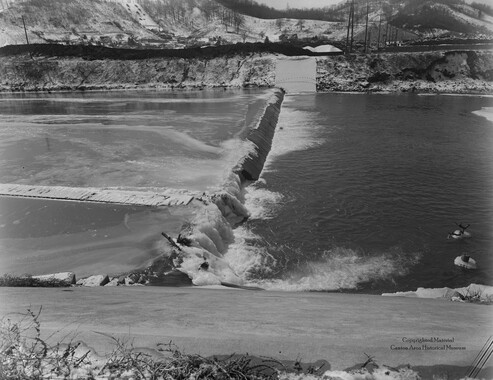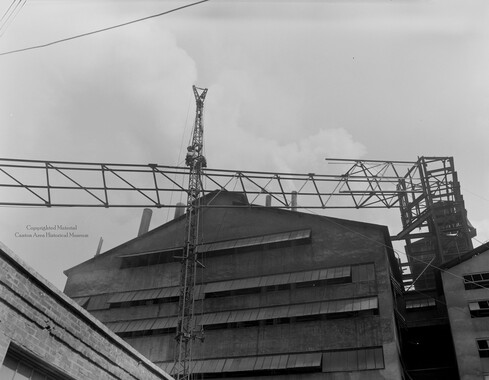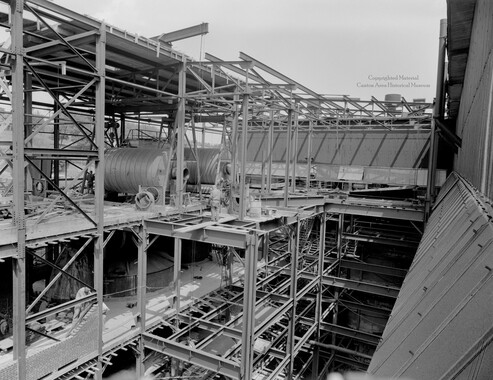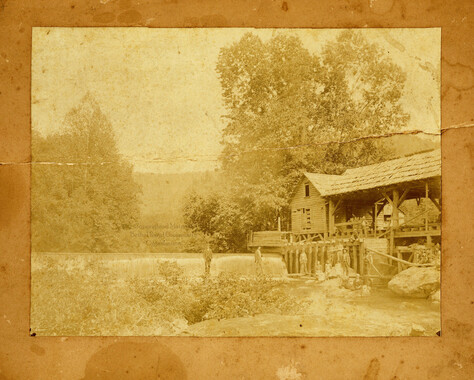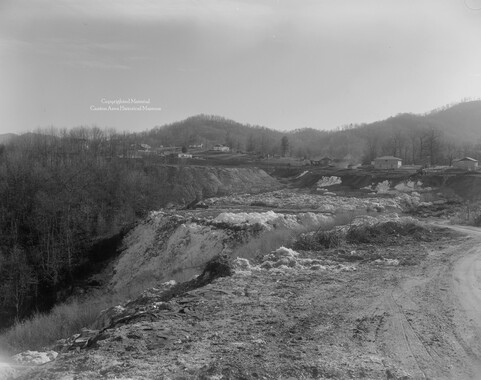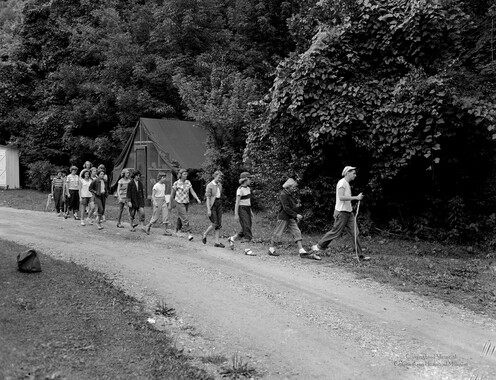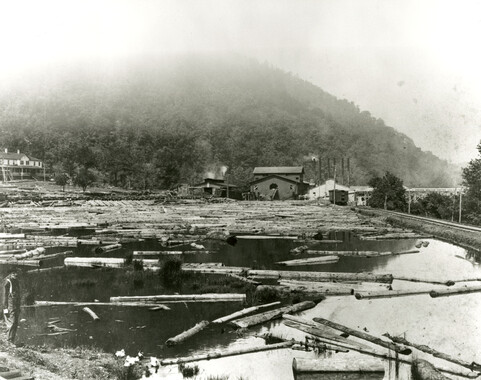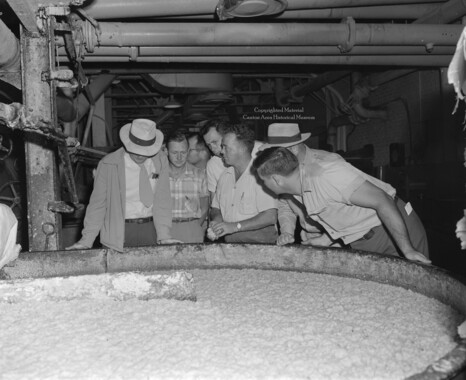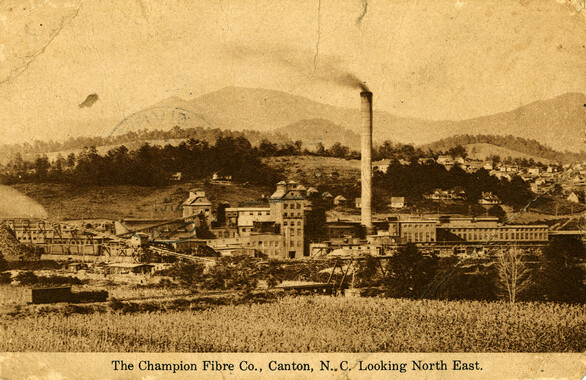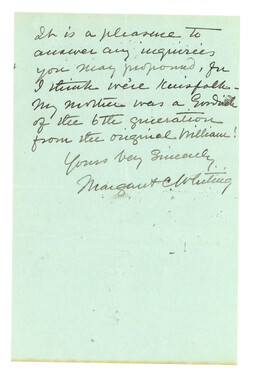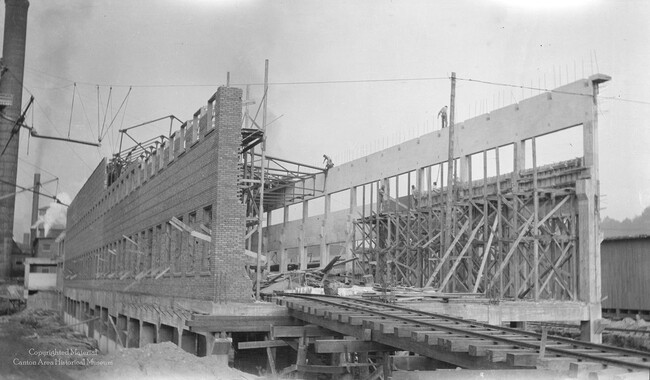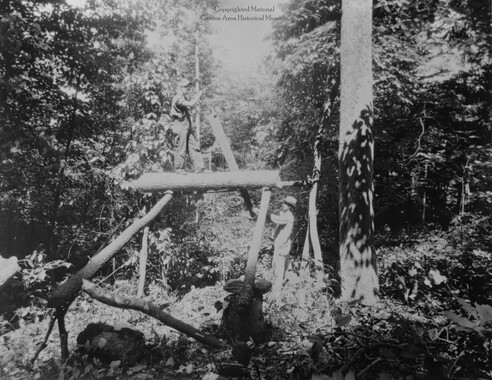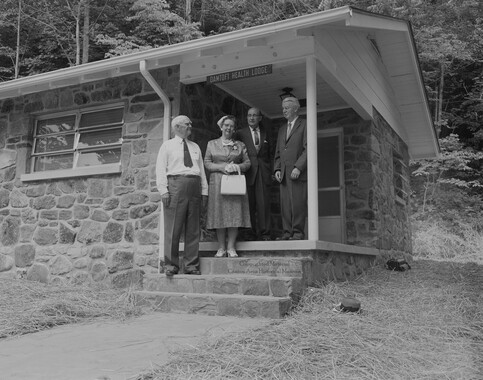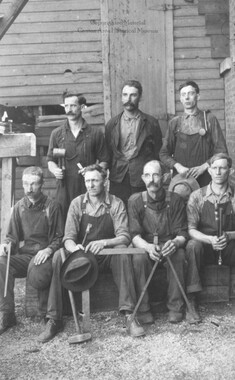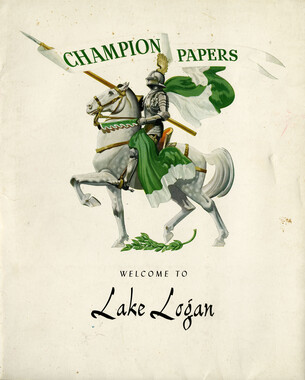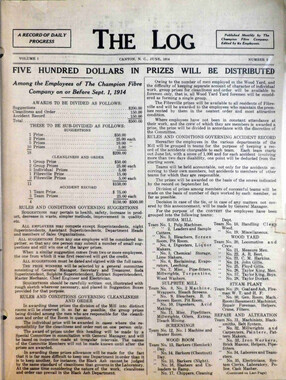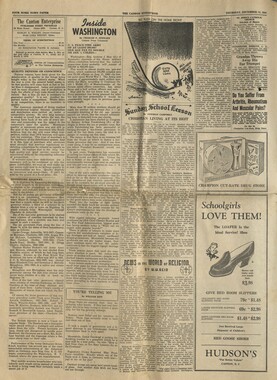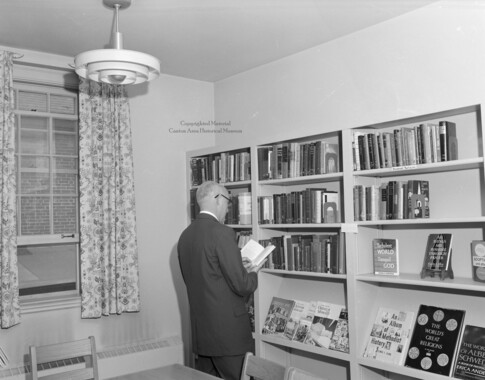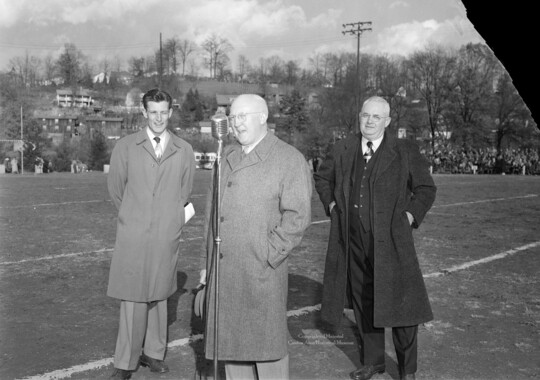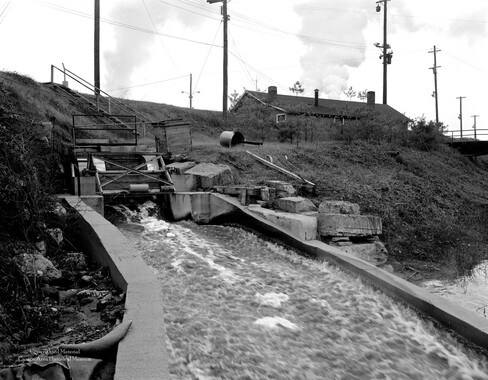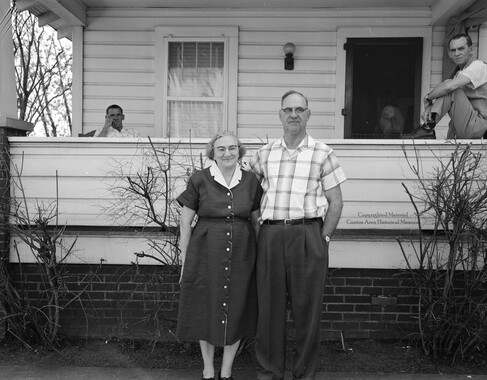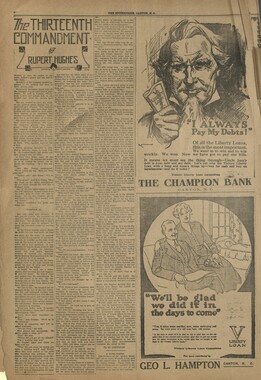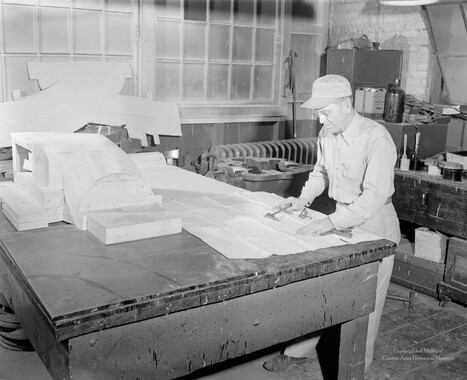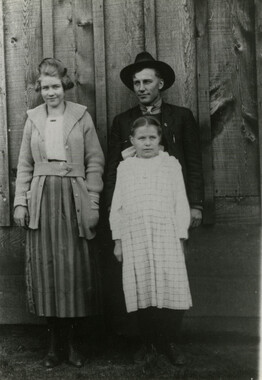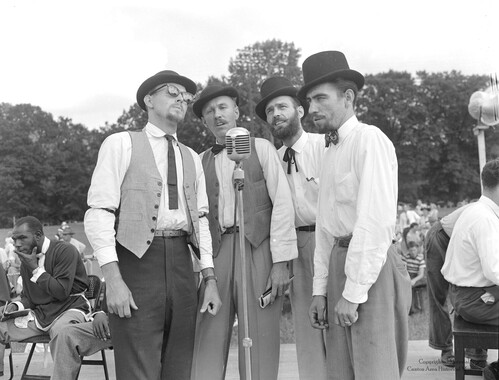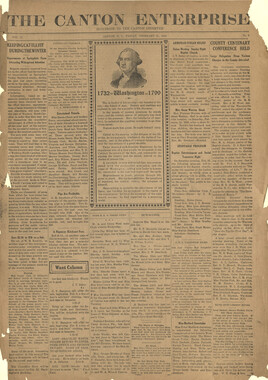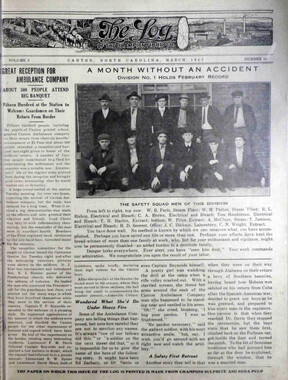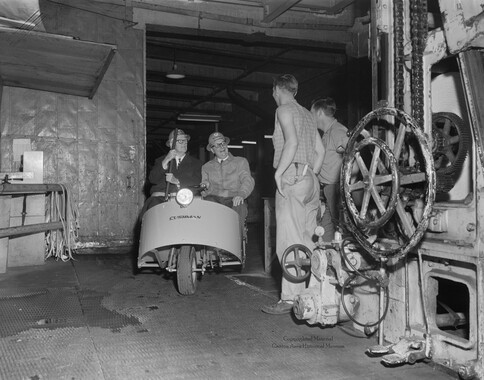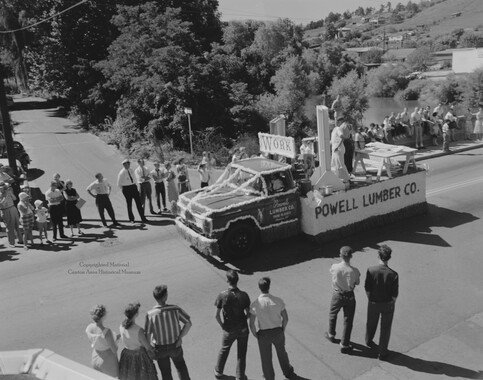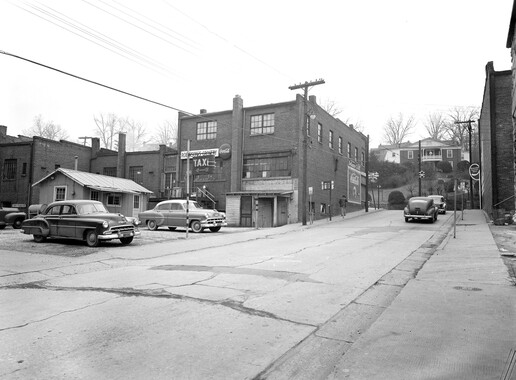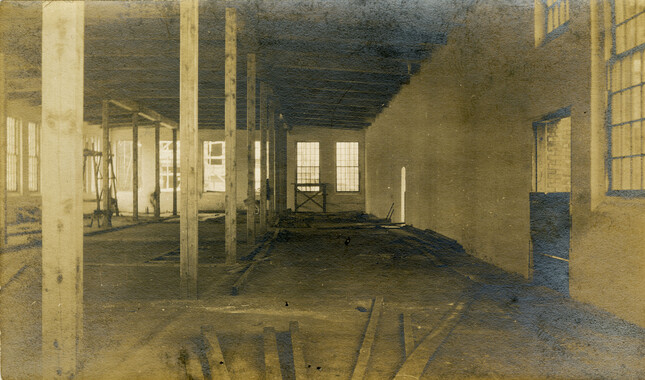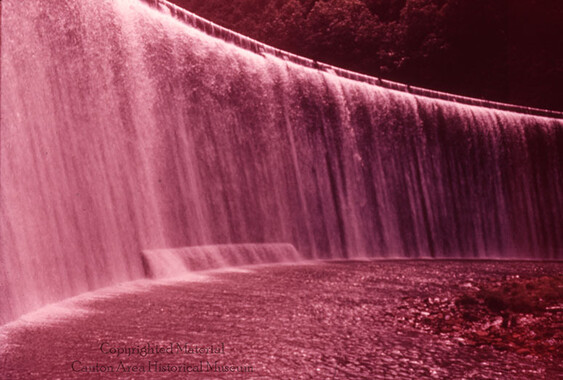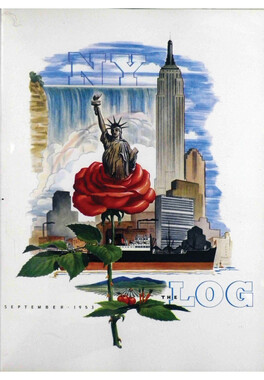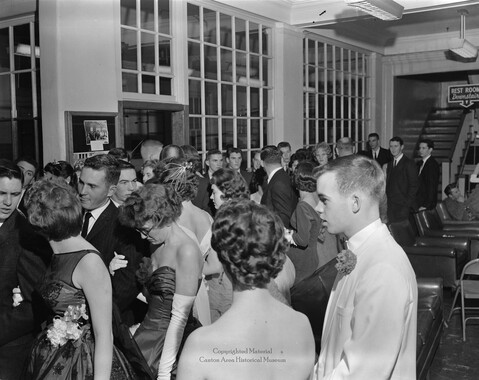Western Carolina University (20)
View all
- Canton Champion Fibre Company (2308)
- Cherokee Traditions (293)
- Civil War in Southern Appalachia (165)
- Craft Revival (1942)
- Great Smoky Mountains - A Park for America (2767)
- Highlights from Western Carolina University (430)
- Horace Kephart (941)
- Journeys Through Jackson (154)
- LGBTQIA+ Archive of Jackson County (24)
- Oral Histories of Western North Carolina (314)
- Picturing Appalachia (6772)
- Stories of Mountain Folk (413)
- Travel Western North Carolina (160)
- Western Carolina University Fine Art Museum Vitreograph Collection (129)
- Western Carolina University Herbarium (92)
- Western Carolina University: Making Memories (708)
- Western Carolina University Publications (2283)
- Western Carolina University Restricted Electronic Theses and Dissertations (146)
- Western North Carolina Regional Maps (71)
- World War II in Southern Appalachia (131)
University of North Carolina Asheville (6)
View all
- Allanstand Cottage Industries (62)
- Appalachian National Park Association (53)
- Bennett, Kelly, 1890-1974 (1388)
- Berry, Walter (76)
- Brasstown Carvers (40)
- Carver, George Washington, 1864?-1943 (26)
- Cathey, Joseph, 1803-1874 (1)
- Champion Fibre Company (233)
- Champion Paper and Fibre Company (297)
- Cherokee Indian Fair Association (16)
- Cherokee Language Program (22)
- Crowe, Amanda (40)
- Edmonston, Thomas Benton, 1842-1907 (7)
- Ensley, A. L. (Abraham Lincoln), 1865-1948 (275)
- Fromer, Irving Rhodes, 1913-1994 (70)
- George Butz (BFS 1907) (46)
- Goodrich, Frances Louisa (120)
- Grant, George Alexander, 1891-1964 (96)
- Heard, Marian Gladys (60)
- Kephart, Calvin, 1883-1969 (15)
- Kephart, Horace, 1862-1931 (313)
- Kephart, Laura, 1862-1954 (39)
- Laney, Gideon Thomas, 1889-1976 (439)
- Masa, George, 1881-1933 (61)
- McElhinney, William Julian, 1896-1953 (44)
- Niggli, Josephina, 1910-1983 (10)
- North Carolina Park Commission (105)
- Osborne, Kezia Stradley (9)
- Owens, Samuel Robert, 1918-1995 (11)
- Penland Weavers and Potters (36)
- Roberts, Vivienne (15)
- Roth, Albert, 1890-1974 (142)
- Schenck, Carl Alwin, 1868-1955 (1)
- Sherrill's Photography Studio (2565)
- Southern Highland Handicraft Guild (127)
- Southern Highlanders, Inc. (71)
- Stalcup, Jesse Bryson (46)
- Stearns, I. K. (213)
- Thompson, James Edward, 1880-1976 (226)
- United States. Indian Arts and Crafts Board (130)
- USFS (683)
- Vance, Zebulon Baird, 1830-1894 (1)
- Weaver, Zebulon, 1872-1948 (58)
- Western Carolina College (230)
- Western Carolina Teachers College (282)
- Western Carolina University (1794)
- Western Carolina University. Mountain Heritage Center (18)
- Whitman, Walt, 1819-1892 (10)
- Wilburn, Hiram Coleman, 1880-1967 (73)
- Williams, Isadora (3)
- Cain, Doreyl Ammons (0)
- Crittenden, Lorraine (0)
- Rhodes, Judy (0)
- Smith, Edward Clark (0)
- Appalachian Region, Southern (2393)
- Asheville (N.C.) (1887)
- Avery County (N.C.) (26)
- Blount County (Tenn.) (161)
- Buncombe County (N.C.) (1664)
- Cherokee County (N.C.) (283)
- Clay County (N.C.) (555)
- Graham County (N.C.) (233)
- Great Smoky Mountains National Park (N.C. and Tenn.) (478)
- Haywood County (N.C.) (3522)
- Henderson County (N.C.) (70)
- Jackson County (N.C.) (4692)
- Knox County (Tenn.) (25)
- Knoxville (Tenn.) (12)
- Lake Santeetlah (N.C.) (10)
- Macon County (N.C.) (420)
- Madison County (N.C.) (211)
- McDowell County (N.C.) (39)
- Mitchell County (N.C.) (132)
- Polk County (N.C.) (35)
- Qualla Boundary (981)
- Rutherford County (N.C.) (76)
- Swain County (N.C.) (2113)
- Transylvania County (N.C.) (247)
- Watauga County (N.C.) (12)
- Waynesville (N.C.) (68)
- Yancey County (N.C.) (72)
- Aerial Photographs (3)
- Aerial Views (60)
- Albums (books) (4)
- Articles (1)
- Artifacts (object Genre) (228)
- Biography (general Genre) (2)
- Cards (information Artifacts) (38)
- Clippings (information Artifacts) (191)
- Crafts (art Genres) (622)
- Depictions (visual Works) (21)
- Design Drawings (1)
- Drawings (visual Works) (184)
- Envelopes (73)
- Facsimiles (reproductions) (1)
- Fiction (general Genre) (4)
- Financial Records (12)
- Fliers (printed Matter) (67)
- Glass Plate Negatives (381)
- Guidebooks (2)
- Internegatives (10)
- Interviews (811)
- Land Surveys (102)
- Letters (correspondence) (1013)
- Manuscripts (documents) (619)
- Maps (documents) (159)
- Memorandums (25)
- Minutes (administrative Records) (59)
- Negatives (photographs) (5835)
- Newsletters (1285)
- Newspapers (2)
- Occupation Currency (1)
- Paintings (visual Works) (1)
- Pen And Ink Drawings (1)
- Periodicals (193)
- Personal Narratives (7)
- Photographs (12975)
- Plans (maps) (1)
- Poetry (6)
- Portraits (1663)
- Postcards (329)
- Programs (documents) (151)
- Publications (documents) (2237)
- Questionnaires (65)
- Scrapbooks (282)
- Sheet Music (1)
- Slides (photographs) (402)
- Sound Recordings (796)
- Specimens (92)
- Speeches (documents) (15)
- Tintypes (photographs) (8)
- Transcripts (322)
- Video Recordings (physical Artifacts) (23)
- Vitreographs (129)
- Text Messages (0)
- A.L. Ensley Collection (275)
- Appalachian Industrial School Records (7)
- Appalachian National Park Association Records (336)
- Axley-Meroney Collection (2)
- Bayard Wootten Photograph Collection (20)
- Bethel Rural Community Organization Collection (7)
- Blumer Collection (5)
- C.W. Slagle Collection (20)
- Canton Area Historical Museum (2110)
- Carlos C. Campbell Collection (282)
- Cataloochee History Project (65)
- Cherokee Studies Collection (4)
- Daisy Dame Photograph Album (5)
- Daniel Boone VI Collection (1)
- Doris Ulmann Photograph Collection (112)
- Elizabeth H. Lasley Collection (1)
- Elizabeth Woolworth Szold Fleharty Collection (4)
- Frank Fry Collection (95)
- George Masa Collection (173)
- Gideon Laney Collection (452)
- Hazel Scarborough Collection (2)
- Hiram C. Wilburn Papers (28)
- Historic Photographs Collection (236)
- Horace Kephart Collection (861)
- Humbard Collection (33)
- Hunter and Weaver Families Collection (1)
- I. D. Blumenthal Collection (4)
- Isadora Williams Collection (4)
- Jesse Bryson Stalcup Collection (47)
- Jim Thompson Collection (224)
- John B. Battle Collection (7)
- John C. Campbell Folk School Records (80)
- John Parris Collection (6)
- Judaculla Rock project (2)
- Kelly Bennett Collection (1407)
- Love Family Papers (11)
- Major Wiley Parris Civil War Letters (3)
- Map Collection (12)
- McFee-Misemer Civil War Letters (34)
- Mountain Heritage Center Collection (4)
- Norburn - Robertson - Thomson Families Collection (44)
- Pauline Hood Collection (7)
- Pre-Guild Collection (2)
- Qualla Arts and Crafts Mutual Collection (12)
- R.A. Romanes Collection (681)
- Rosser H. Taylor Collection (1)
- Samuel Robert Owens Collection (94)
- Sara Madison Collection (144)
- Sherrill Studio Photo Collection (2558)
- Smoky Mountains Hiking Club Collection (616)
- Stories of Mountain Folk - Radio Programs (374)
- The Reporter, Western Carolina University (510)
- Venoy and Elizabeth Reed Collection (16)
- WCU Gender and Sexuality Oral History Project (32)
- WCU Mountain Heritage Center Oral Histories (25)
- WCU Oral History Collection - Mountain People, Mountain Lives (71)
- WCU Students Newspapers Collection (1744)
- Western North Carolina Tomorrow Black Oral History Project (69)
- William Williams Stringfield Collection (2)
- Zebulon Weaver Collection (109)
- African Americans (390)
- Appalachian Trail (35)
- Artisans (521)
- Cherokee art (84)
- Cherokee artists -- North Carolina (10)
- Cherokee language (21)
- Cherokee pottery (101)
- Cherokee women (208)
- Church buildings (167)
- Civilian Conservation Corps (U.S.) (110)
- College student newspapers and periodicals (1830)
- Dams (103)
- Dance (1023)
- Education (222)
- Floods (61)
- Folk music (1015)
- Forced removal, 1813-1903 (2)
- Forest conservation (220)
- Forests and forestry (917)
- Gender nonconformity (4)
- Great Smoky Mountains National Park (N.C. and Tenn.) (154)
- Hunting (38)
- Landscape photography (10)
- Logging (103)
- Maps (84)
- Mines and mineral resources (8)
- North Carolina -- Maps (18)
- Paper industry (38)
- Postcards (255)
- Pottery (135)
- Railroad trains (71)
- Rural electrification -- North Carolina, Western (3)
- School integration -- Southern States (2)
- Segregation -- North Carolina, Western (5)
- Slavery (5)
- Sports (452)
- Storytelling (245)
- Waterfalls -- Great Smoky Mountains (N.C. and Tenn.) (66)
- Weaving -- Appalachian Region, Southern (280)
- Wood-carving -- Appalachian Region, Southern (328)
- World War, 1939-1945 (173)
Early lumbering in western North Carolina
-
This 6-page account of Sunburst logging community, possibly written by Larry W. Mull, includes a unique perspective on how Sunburst got its name, a look at the railroad lines in western North Carolina, and a sketch of everyday life in the Sunburst area logging camps.
-
-
THE EARLY LUMBERING IN WESTERN NORTH CAROLINA In the 1880's and 1890's a number of industrous lumbermen started lumber operations in upper Haywood County with circle mills on a small scale. William Whitmire, Samuel Montgomery Smith, James A, Seavers, and R.G. Rogers were among the number, to name just a few. c The Eastern Capitalist Sroora Company began operating ' i 1 •' ' cn the Pigeon River in the I<|90' s. V/hen these small operators were forced to discontinue due to financial difficulties, Champion Lumber Company of Deleware bought the bonds of the owners and began operating on the Pigeon, using two circle mills. They set up a small circle mill at Boomer's End to cut small logs on and a larger one on East Fork for sawing larger logs. The company then contacted W.J. Parks of "Tennessee to build a standard gnage railroad from Canton, N.C. to the Forks of Pigeon, a distance of sixteen miles. They acquired a franchise on the line and named it the Tennessee and North Carolina Railroad. Locally, it became known as the "Pea Vine Railroad." Champion's sawyer was Lloyd Grover Rogers, 17, of Hayv/ood County, who was the sawyer on both mills on rotating basis. For one week he would saw on the large rail! and the next week on the smaller mill. Lloyd, who was born April 13# 1888, the son of Manse Rogers who invented a perpetual machine that won a large award, had the distinction of having been the youngest sawyer. He died December 3, 1975, having lived longer than any of the the other sawyers that worked for Champion. In a recent interview with Rogers which was vary inspiring and included significient history, he told us, though not in a magniloquence manner, that he saw the first boards that were cut on both saws, and all the lumber to build the company's big bandmill at Sunburst, Champion Paper and Fibre Company at Canton and the sawmill town's of Spruce and Sunburst. "Will you believe it," he began with a trace of nostalgic, "the Champion Mill was built entirely o? spruce timber. S U N B U R S T The very name casts a spell of mystery and enchantments There are many versions of how Sunburst received it nomenclature. Some say it derived from something pertaining to the sun, others don't have any idea. But the place got its name from a house and not the sun, as some writers and historians believe. Originally, the place was called Boomer's End, named thus by James Reece, a pioneer settler with an hypemethropic air who christened everything that surrounded him. Sunburst received its name from a decorous sunbow arch on the gables of a house designed by Samuel Montgomery Smith which he built next to the huge Clubhouse on Middle Prong. 3 The sunbow on the four gables spread like a rising sun and could be seen from a long distance. Smith naxaed it the "Sunbow House." Reuben 3. Robertson, a stockholder of Champion Lumber Company, moved into the clubhouse in 1905» where his daughter, Hope, was born. The town, when completed, consisted of two long rows of quaint houses on either side of a boardwalk, a barber shop, huge commissary, a logging camp, boarding houses and other buildings. The builders comprehension was seen in the undemoninational church that lifted its round three-story belfry among the ancient old oaks and chestnut trees that stood around it? ponderous and modest in its scope, giant sized to those of its neighbors who should have fought to rescue it from oblivion as a precious piece of Americanna. The large church was unique in that it also served as a commissary and school on the upper ground floor and a school of forestry for German-born Dr. Carlos Alwin Schenck on the lower ground floor. The second floor consisted of a dance hall, skating rink, social affairs and the Mason and Odd-Fellows haxi.« R A I L R O A D S Steep mountain grades made it necessary to lay "switchbacks," zigzag railroads up steep inclines to lessen the grades, and many of them v/ere required on the three prongs of Pigeon River h in the Blue Bidge Mountains of Haywood and Transylvania Counties. It took expert engineers to lay out such railroads at Sunburst. The most unprecedented piece of incline switchback railroading in Eastern America was the colossal feat that twisted for a quarter of a mile at mile-high Beech Gap on the present Blue Ridge Parkway, then crossing the face of Green Mountain leading to the crest of the Devil's Courthouse whose summit is 5,952 feet. From a distance, trains operating on the un - paralled switchback affair appeared to be meeting each other head-on, presenting an eloquent and graphic picture. The double incline that was laid at Raven's Gap was one and a half-miles long and was the only one of its kind in Eastern America. Machinery to operate the incline was hauled up the mountain by groundhog skidders a piece at a time. The weired looking incline in 1913* A special made apparattus was devised and made to operate the gigantic incline. As a loaded car came down the incline a string of empty cars went up. L O G G I N G C A M P S The company had legging camps above the sawmill town on each of the three prongs of Pigeon. These camps were as as quaint and artistic as the loggers themselves. The dining tables and benches were made by carpentars from plain boards and their legs of crossed boards. They were not like other company camps that served out of tin plates and cups and used pewter tableware, they used chinaware, good tableware and 5 •tablecloths. The diningroom floor became pretty well, cut up by the loggers caulk -"cutter boots," their own terminology. The camp's straw bunks were subject to bedbugs and lice which most lobbyhogs never bothered to rid them of. The joke was that the lobbyhog washed the bedcovers once a year down at the river. A bang-bang! on a short piece of railroad steel hanging by the cook's door summoned the hardy and hungry loggers to their regular places at the long dining table. For bathing purposes in the winter large sine tubs werved the purpose, and during the summer the loggers want in swimming down at the river where they usually washed their clothes. It's a crying shame that some movie scout never discovered some of those natural born humorists and esprit de corps, or that television wasn't known then. The homespun philosophies in the rustic camps would have made todays comedians take a back seat and give notice. Today's humorist have to hire others to create jokes and wit for their programs to make people laugh and get high pay for it. loggers made people laugh for nothing and needed no script writers — it just came naturally and on the spur of the moment. THENAME OF SUNBURST WAS CHANGED When Champion Lumber Company built a new sawmill town and erected the world's largest bandmill on the old Pendland Place, they changed the name and called it Spruce and moved 6 Sunburst on down the river. The new Sunburst became a larger place than the town of Canton. And in 1913* however, the huge mill burned down. Another was erected and used for only a few months. The company was then called Suncrest Lumber Company and they also operated mills at Ravensford, Smokemont both in Swain Counties, and Crestraont in Haywood County. When the Government acquired the land for a national park it included the holdings of the company who then sold to them. Suncrest sold their locomotives, skidders, loaders and other steel equiptment to the Japanese Government for scrap who in turn shot it right back at us during World War 11.
